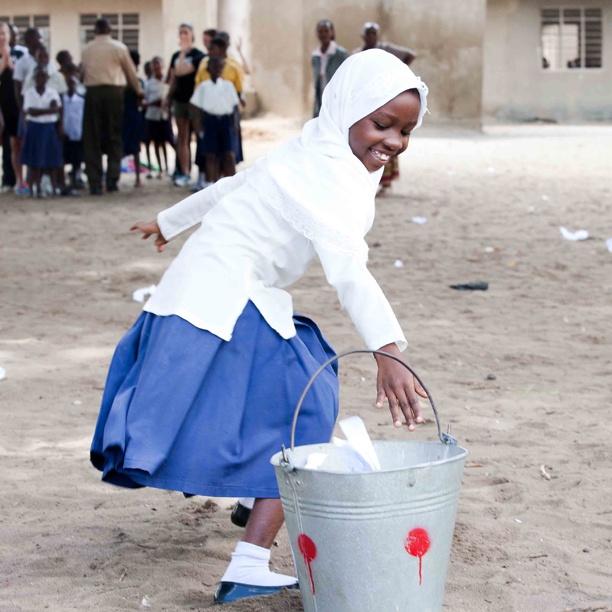
Fact or fiction: girls and women are especially vulnerable to HIV infection.
Fact.
Fact or fiction: gender and power roles in society make it hard for girls and women to voice their opinion about sexual matters.
Fact.
Fact or fiction: even if the girls and women felt comfortable speaking their minds, they wouldn't know what to say or how to protect themselves. A lack of access to education means girls and women are less likely to learn and understand the facts about sex, HIV and AIDS.
Fact.
Here's another fact: according to amfAR, nearly 240 people contract HIV every hour. And, in 2013, almost 60 per cent of new HIV infections among people aged 15–24 years occurred among adolescent girls and young women.
We're helping change this.
Our educational programs use games, sports and activities to teach children health-based lessons, like how to protect against disease and to understand human rights. In our game Inside Outside, we educate youth about why girls are especially vulnerable to HIV infection.
Using the same parameters as a relay race, our Coaches divide the players into groups and have each group stand in a line. Several feet ahead of each line is a bucket or box. Directly on the ground in front of each line are set of cards with facts written on them. The person at the front of each line has to pick up a card and read the statement written on it out loud to their teammates. The group determines if the statement is an "internal" or "external" fact.
Internal facts can state anything from: it is socially unacceptable to talk about sexual matters openly and girls receive greater amounts of infected fluids during sexual intercourse. These facts are internal because they relate to a girl's mind or body. External facts, like: sexual violence against women is tolerated by society and women are suspected of being unfaithful or immoral if they suggest using a condom, relate to society or culture.
Once the team determines if the fact is internal or external, the person at the front of the line races to the bucket and drops the card inside if the answer is internal or beside the bucket if it is external. The player runs back to the line, tags the next teammate on the hand and the games continues. After each child has had a turn, the Coaches gather the kids together to reflect on the game.
The Coaches ask the children to read all of the cards in the bucket and then read the cards outside the bucket. The group discusses if any of the facts could be both internal and external and why. They talk about which external factors are the hardest to accept and why. And they identify the attitudes and beliefs that need to change so that girls can be safer. The group then comes up with a plan of action on how to support the girls in their community. This plan is written down and taped to the wall as a reminder of the power the children have to make a positive change.



